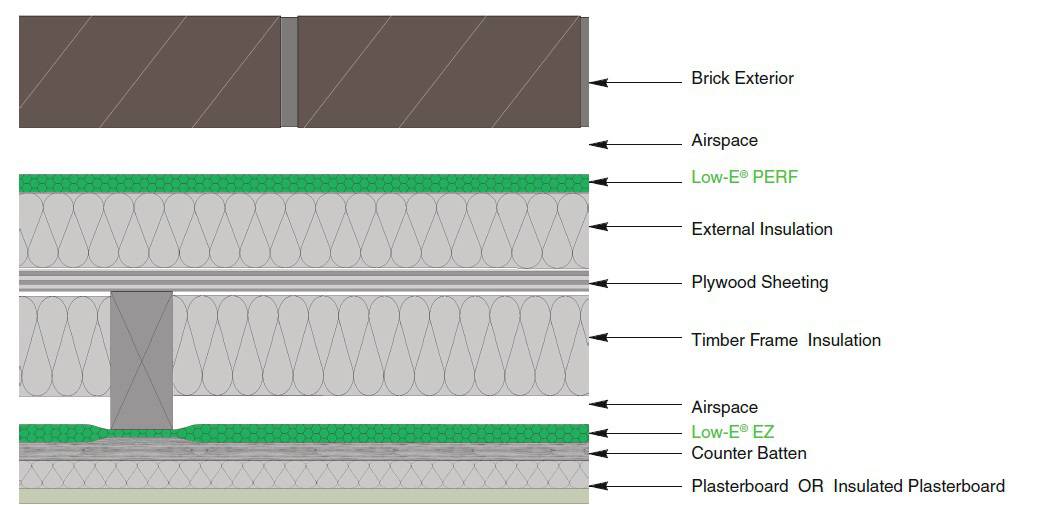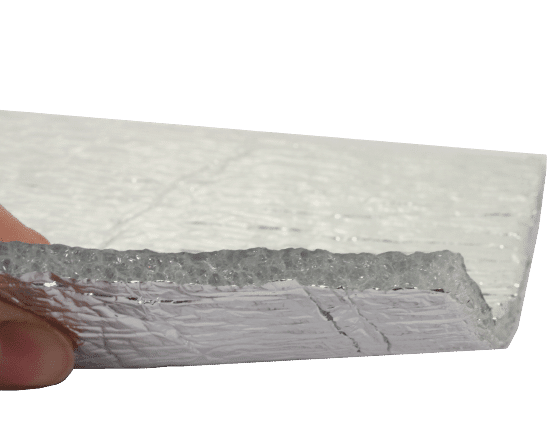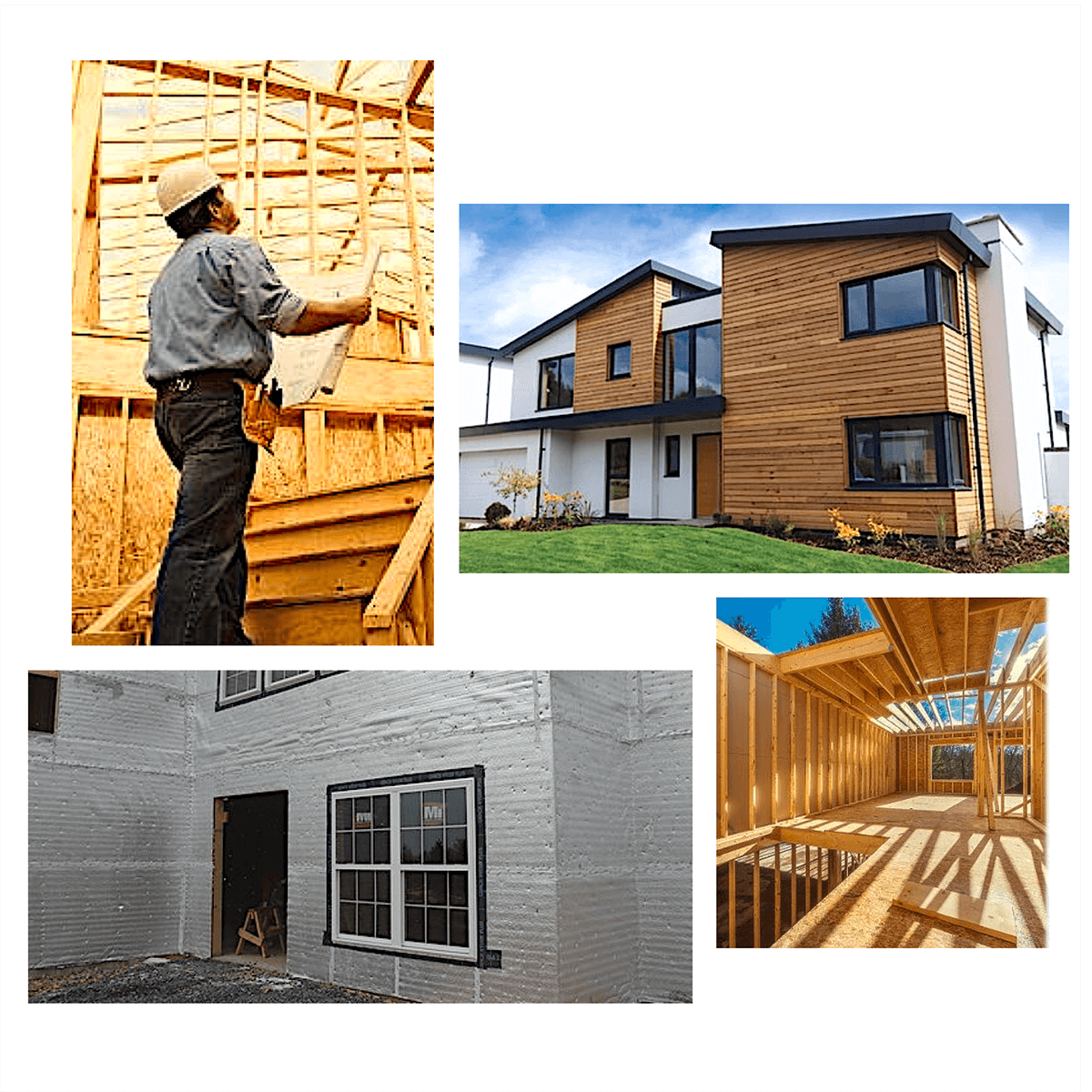
Timber Frame Insulation
Why install a vapour barrier or air infiltration barrier on a timber frame that doesn’t have a thermal value? Low-E Insulation will increase the performance of your timber frame in less space than anything else on the market.
Want to get hands on with our products?
Reasons our customers use Low-E Conservatory Insulation
Installing Timber Frame Insulation
Timber Frame Insulation Options
Installing Timber Frame Insulation
Low-E Insulation EZY Seal works as a complete air infiltration and vapour barrier, while also boosting thermal performance and reducing thermal bridging. Our Low-E Insulation PERF is breathable and perfect for use on the external side of building. The perfect combination for any timber frame building.
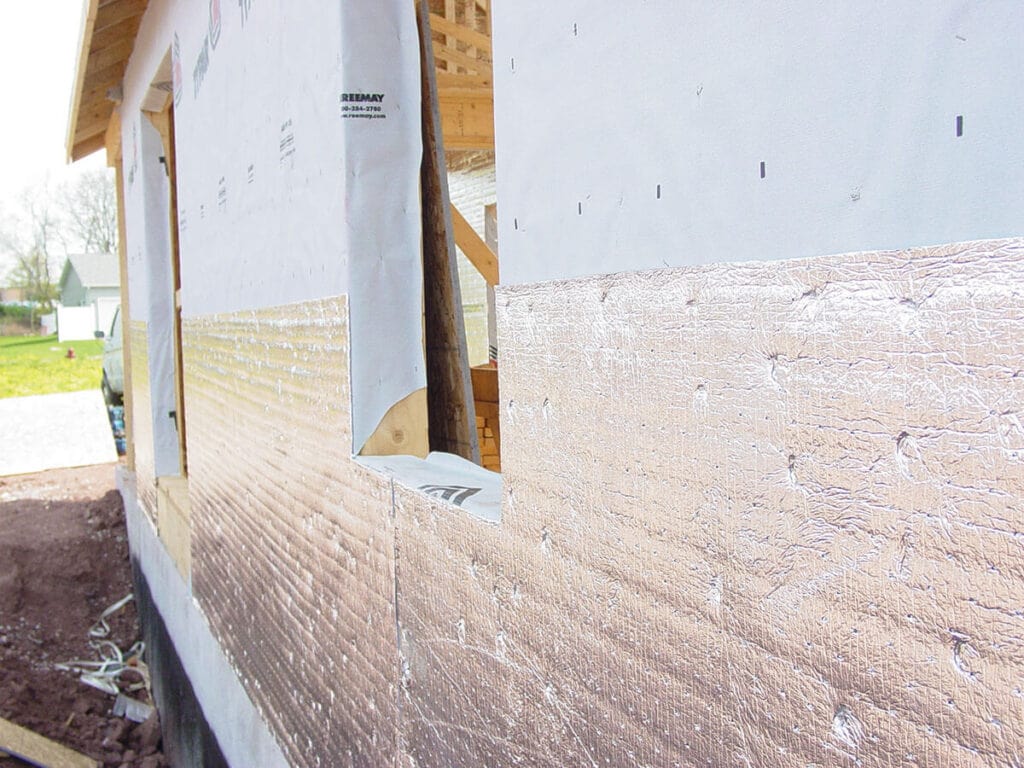
Timber Frame Insulation Options
Low-E timber frame insulation is ideal for insulating your home and is the perfect choice for an easy installation. If you are considering insulating your timber frame property please read through the below guides for the type of roof you have in your home.
Timber Frame - Internal and External (Partial Fill)
With Low-E PERF installed on the exterior side of the frame as a breather membrane and Low-E EZY Seal installed internally as a vapour control layer and airtight membrane, the amount of secondary insulation required is greatly reduced. This system creates the most efficient timber frame possible and reduces life-cycle running costs of any building.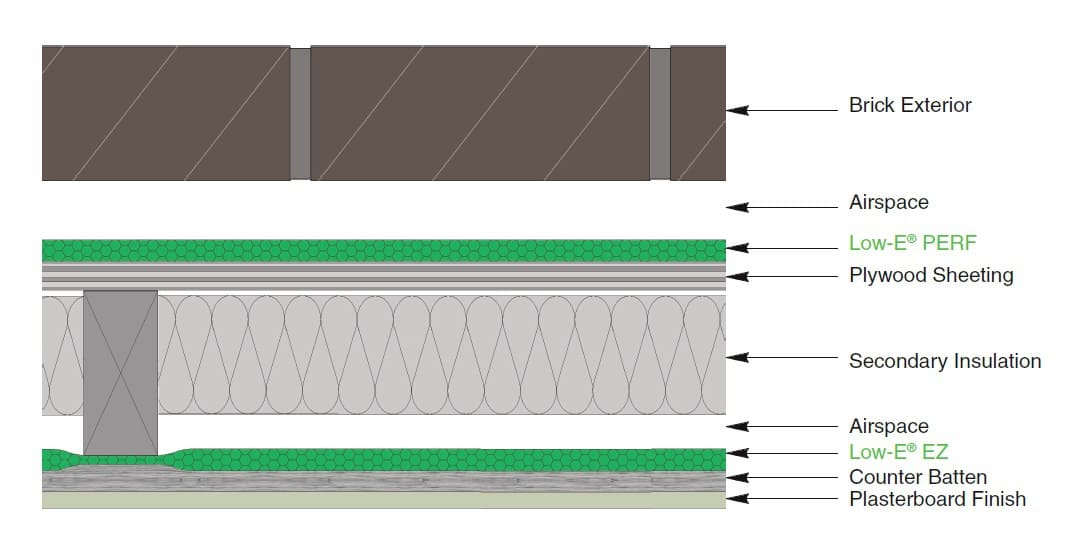
Timber Frame – Internal (Partial Fill)
In this example, Low-E EZY Seal is installed on the face of the timber frame with a partial fill of insulation in the timber frame. This system increases thermal performance, reduces draughts and provides moisture protection, all of which can be problematic in timber frame construction. The counter battening on the face of the frame creates a service void ensuring Low-E EZY Seal (the vapour barrier) is not perforated.
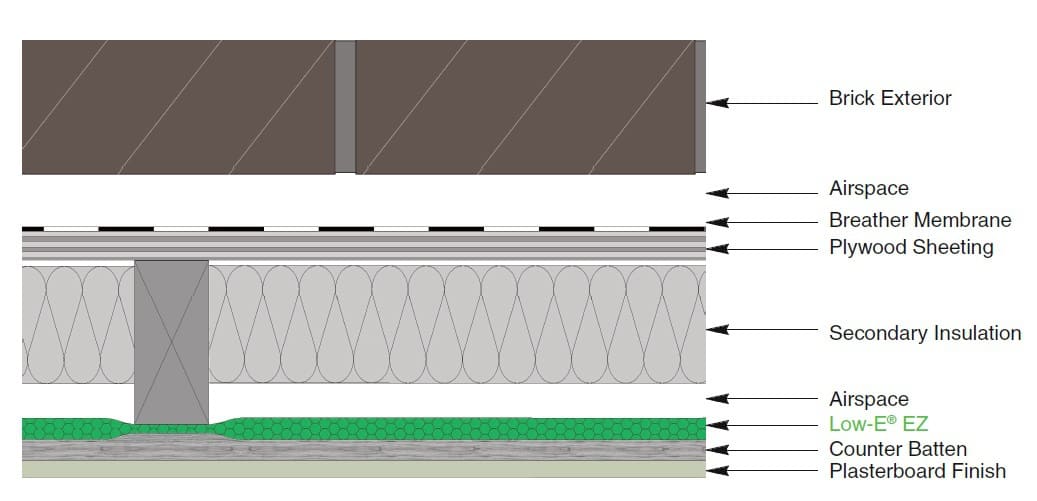
Timber Frame – Internal (Full Fill)
Low-E can also be installed on a timber frame with a full fill of insulation. A full fill of insulation is usual if a Blown or Natural Fibre insulation (sheep’s wool etc) is used in the timber frame. In this example, Low-E EZY Seal is used to increase thermal performance, provide air tightness and moisture protection.
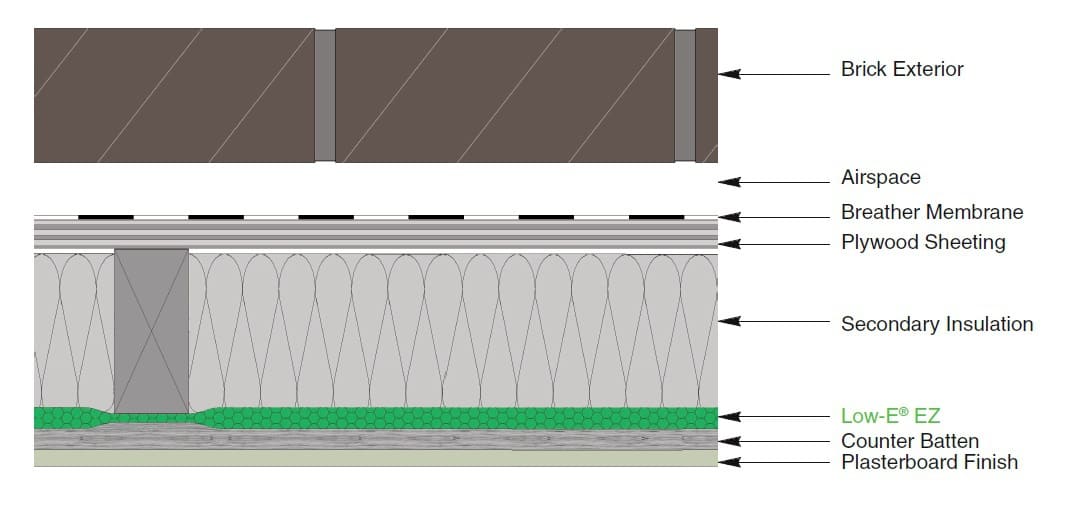
Timber Frame – SIPS
SIPS panels are usually installed with airtight membranes internally and breather membranes externally. Installing Low-E EZY Seal and Low-E PERF in place of these membranes does not add any labour steps to the build, but will increase the thermal performance of these already highly efficient systems and reduce the building’s running costs.
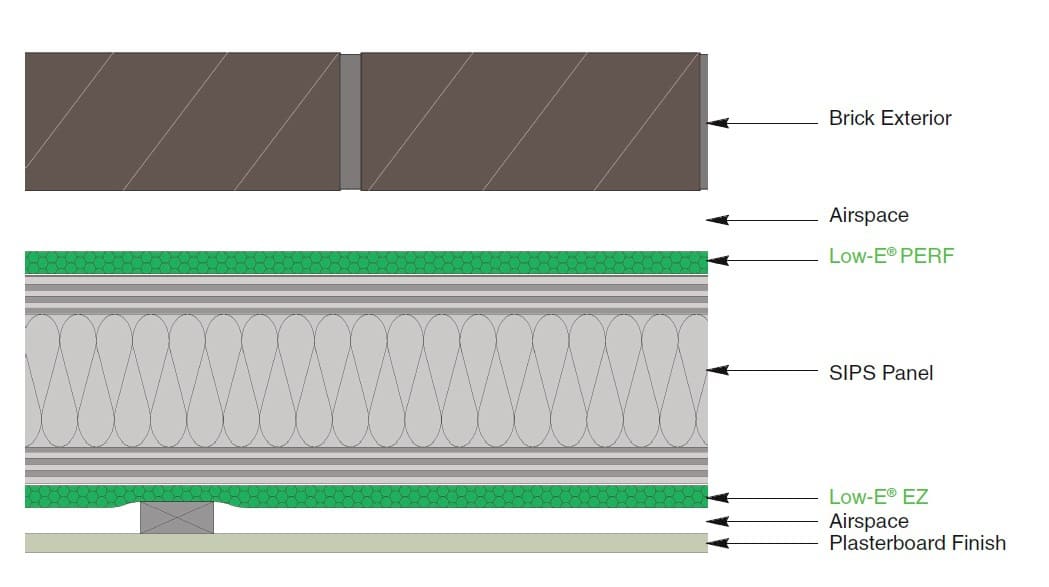
Timber Frame – Passive House
To meet extremely low U-values or ‘Passive House’ standards, specially designed timber frames incorporating Low-E Insulation can be constructed to reduce thermal bridging and create the most efficient buildings. These can be constructed on or off-site making them extremely versatile.
In this example a rigid foam is installed between the studs with a second layer (unbridged) installed on the exterior side of the timber frame, faced with Low-E PERF. Low-E EZY Seal is then installed on the interior face of the frame, before counter battening. Another option is to use an insulated plasterboard. This creates a second unbridged layer of insulation. This will also reduce the amount of insulation required between the studs.